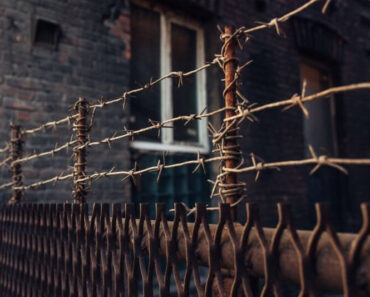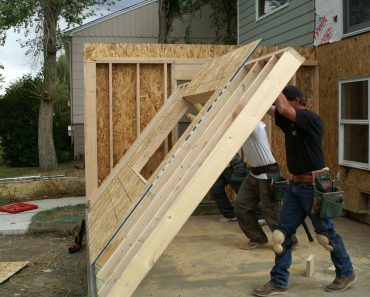Rising electricity and heating bills got you down? Put up some windbreaks in the form of trees and shrubs to lower your utility expenses. But that’s just for starters. There are plenty of ways to use landscaping to make your home more energy-efficient.
In a Nutshell
Reduce energy usage around your property with:
- Shade Trees
- Windbreaks
- Fencing
- Leafless Trees
- Landscape layers
- Landscaping for fire safety
- Vines
- Shade the AC
- Lawn water assessment
- Drip irrigation
- Rain barrels
- Yard ponds
- Xeriscaping
- Artificial Turf
- Native plants
- Mulch
- Solar lighting
Keep Cool With Shade Trees
If your house gets hot in the summer, plant some trees close to home. Shade trees lower the temperature in your house naturally. Leafy trees and shrubs keep the sun’s rays from overheating window glass, letting more heat in than insulated walls. Trees covering the southeast and east side of the house ward off heat best.
Landscaping for shade can save up to 25% of your home’s cooling and heating energy costs, especially with deciduous trees like large-leaf magnolias, maples, and oaks. Shade over asphalt, patios, and walkways keeps those surfaces cooler too. Enjoy dining al fresco? The shade from trees will offer welcome relief from the sun’s heat.
Use Trees and Shrubs as Windbreaks
A breezy day is nice if you have pinwheels in the yard, but too much wind can damage your house. Groves and hedges with thick vegetation block heavy winds. They’ll also prevent cold freezes and air from seeping into windows and cracks in your home’s foundation.
Fencing also stops blustery winds, as do structures like gazebos, pergolas, storage sheds, and outdoor porches. Vines with thickening foliage filter out sunlight.
In the fall and winter, leafless trees with thick trunks and limbs protect your house from cold winds. Coniferous trees — pines and other evergreens — are even better windbreaks in wintertime.
While you want to protect the inside of your house from the cold air, be careful not to cut off the circulation outside. Houses must allow sunshine and air on the roof and outdoor walls for drying after rain or snow.
Layer Your Landscaping
You wear layers of sweatshirts and coats to keep warm, and layering different types of trees creates a pretty and useful windbreak around the house.
For example, the first layer may be one of ornamental trees, the second layer could be evergreen shrubs, the third layer perennials, and the fourth layer vines and ground covers.
Landscaping and Fire Safety
Fires can start anywhere — your house is susceptible to sparks from neighboring homes, rolling wildfires, electrical mishaps, and everything else. When adding trees to the yard, keep these guidelines in mind:
- Plant trees further than 30 feet from the house
- Trim branches hanging above the roof
- Space trees, so the edges of mature canopies are at least 10 feet apart.
The Vine Line
Trees are only one option to surround your property in a protective blanket. Vines and trellises shade the house as they ward off cold winter winds and the hot summer sun. Vines like English ivy grow nicely on masonry, but they are not good for wooden walls or columns. Greenery on wood often causes rot and decomposition. Build a trellis or slatted roof for vines and place them nearby (but not up against) windows. If placed in the right areas, vines can cut down on the home’s summer cooling costs.
Shade the AC
Air conditioning systems get quite a workout on a hot day. The higher the temperature is outside, the harder your AC must work to keep the inside cool. Shading an outdoor air conditioning unit with high shrubs keeps direct sunlight from absorbing into the metal — reducing indoor temperatures by about 3 degrees.
Lower Your Water Usage
Landscape design conserves water as well as energy. Before watering the lawn, determine how much hydration the grass actually needs, so you don’t drown the roots (and raise your water bill).
Cool-season varieties like Kentucky bluegrass, ryegrass, and fescues with strong root systems hold soil in place and cut down on erosion. Warm-season grasses like Zoysia, St. Augustine, and Bahia are generally drought resistant. Better yet, replace the grass with clover. It needs no water and little mowing.
Drip Irrigation
Drip irrigation is a pipe network system that delivers water to plants at their roots. The process keeps the soil at its ideal moisture level without wasting water through sprinklers and indirect garden hoses. With a drip irrigation system, there’s less chance of scattered spraying, erosion, evaporation, and leaching. You won’t be wasting precious water, and there would be less wear and tear on the home’s plumbing.
Rain Barrels
Rainwater is free! When rain falls onto the roof, you can use rain barrels to catch the runoff for use in grass, flowerbeds, and gardens. Set the barrel to drain under a downspout and cover it with mesh netting. One thing: rainwater from the barrel CANNOT be used for drinking. Excess roof water picks up bacteria, chemicals, bird poop, and leafy debris.
Yard Ponds
Ponds and water take space away from the lawn, and that means less time and energy needed for yard work. If the yard doesn’t have a good place for a built-in pond, you can use a large tub or container. (Moveable pond kits are available at your favorite home improvement store. Small DIY starter kits for a 9-square foot, 84-gallon pond may cost around $70 (give or take). Energy efficiency depends on the system; the bigger it is, the more expensive it will be). Yard ponds are aesthetically pleasing and, depending on where they’re placed and how big they are, may draw waterfowl to the home.
Xeriscaping
Xeriscaping and rock gardens need even less water. Switching to drought-tolerant plants means fewer weeds to pull, saving energy in itself!
Xeriscaping is landscaping designed for areas prone to drought or conserving water. Xeriscaping is typically made up of succulents like aloe vera and cacti, which survive with small amounts of water. Xeriscaping with drought-resistant plants and artificial turf saves water and requires less time and money to maintain.
Rock gardens with flat tile pavers and a few bird feeders are a pleasant attraction in the backyard. Rocks, groundcovers, vines, drought-tolerant perennials, and ornamental grasses save energy with less maintenance overall.
Artificial Turf
Nothing says “waterless” and “low maintenance” like artificial grass. By installing artificial turf, you’ll not only be saving on your water bill, but you won’t be spending weekends mowing and weeding the lawn. Synthetic turf is an option for dog runs because there are no chemicals that soak into the ground — fertilizers and herbicides can sicken or kill your pet. Another plus for dog owners? Pet poop is generally easier to clean up from artificial grass.
Green up your thumb with some new plants and flowers. Choose native plants and shrubs that don’t need pesticides, fertilizers, or much water. That adds up to less work and expense for you.
Another benefit of native plants? Native plants provide food for birds, butterflies, bees, and wildlife. Plant fruits and vegetables — there’s nothing like fresh veggies for your table (and more room in your freezer for other things).
Mulch
Cut down on water usage by applying mulch to gardens and flowerbeds. Mulch protects the beds from direct sunlight, which absorbs water from plant root systems. Mulch is especially useful when rainfall is lacking. Mulching means less water; less water means a lower utility bill.
A few more benefits to organic mulching the flowerbeds and garden are:
- Grass and wood chips add nutrients to the soil
- Steadies soil temperatures
- Prevents erosion
- Boosts curb appeal
Solar Lighting
Solar lighting sticks don’t cost much, but they will light up your backyard every evening. Place solar sticks directly into the sun to capture energy from its rays. No wires, cables, or plugs … solar sticks are easy to place into the ground, and you can move them around the yard when the sun shifts. Solar lighting is eco-friendly, but there are a few things to remember:
Keep solar panels or lighting sticks free of dead leaves and other debris. The lights must always absorb the sun’s rays.
Overly cloudy days may not let lights and panels drink in the sunshine.
Do not place solar sticks and panels under covered porches, patios, or anything else where they cannot directly absorb the sun.
Landscaping Changes Can Save You Time and Energy. Designing a landscape to cut down on energy usage starts with a list of problems inside the house — which windows need the most shade, moisture, humidity, and how hard it is for the AC system to cool down each room. The best energy efficiency is the amount of time you won’t have to put into each project.




























